Exploring the Renaissance Tarot Deck: Insights and Interpretations
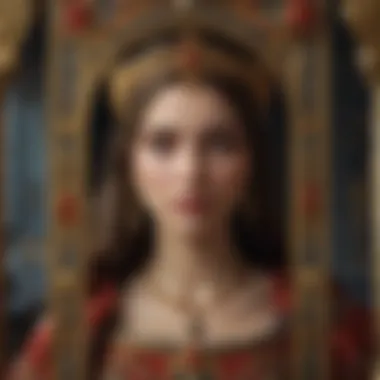
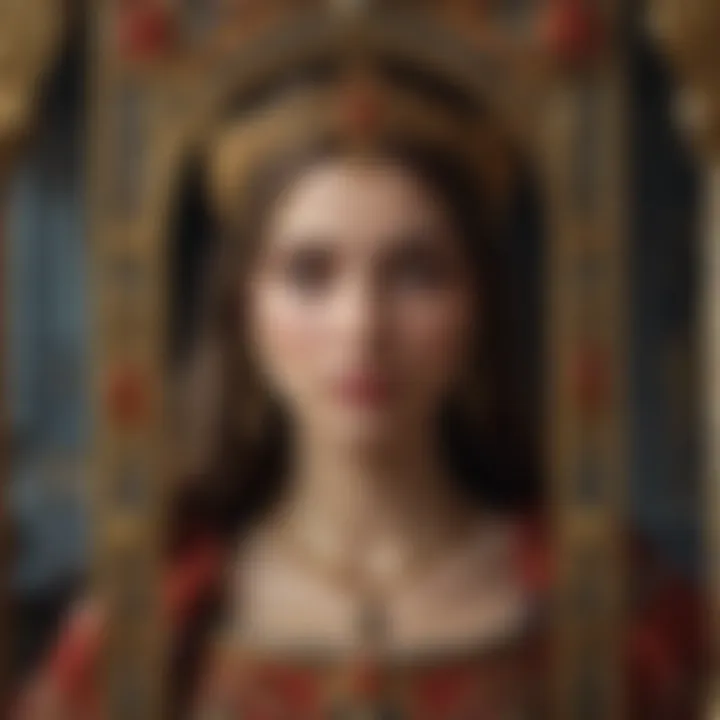
Intro
Exploring the Renaissance Tarot Deck offers a fascinating journey into a rich tapestry of history, intuition, and divination. This tarot deck serves not only as a tool for personal insight but also as a bridge connecting the past with modern mystical practices. With its unique symbolism and intricate artwork, the Renaissance Tarot provides valuable insights into human nature and the universe.
Understanding the Zodiac
Overview of Zodiac Signs
The zodiac is a circle of twelve signs, each representing different personality traits, strengths, and weaknesses. Each sign corresponds to a specific time of year, traditionally associated with the sun’s movement through the sky.
Sign Traits and Characteristics
Each zodiac sign possesses distinct characteristics:
- Aries (March 21 - April 19): Bold and ambitious.
- Taurus (April 20 - May 20): Reliable and patient.
- Gemini (May 21 - June 20): Adaptable and communicative.
- Cancer (June 21 - July 22): Intuitive and nurturing.
- Leo (July 23 - August 22): Generous and warm-hearted.
- Virgo (August 23 - September 22): Analytical and detail-oriented.
- Libra (September 23 - October 22): Diplomatic and fair-minded.
- Scorpio (October 23 - November 21): Passionate and resourceful.
- Sagittarius (November 22 - December 21): Optimistic and adventurous.
- Capricorn (December 22 - January 19): Disciplined and responsible.
- Aquarius (January 20 - February 18): Innovative and humanitarian.
- Pisces (February 19 - March 20): Compassionate and artistic.
Elemental Qualities
The twelve signs are grouped into four elements: Fire, Earth, Air, and Water, adding depth to their interpretations. Each element embodies specific qualities:
- Fire: Energy and enthusiasm (Aries, Leo, Sagittarius).
- Earth: Stability and practicality (Taurus, Virgo, Capricorn).
- Air: Intellect and social connection (Gemini, Libra, Aquarius).
- Water: Emotion and intuition (Cancer, Scorpio, Pisces).
Understanding the zodiac's elements enhances one’s ability to interpret both tarot and astrological insights more deeply.
Astrological Insights
Current Astrological Trends
Staying informed about current astrological trends aids in understanding how celestial movements influence personal and collective experiences. For instance, a retrograde planet may signal a time of reflection and reevaluation.
Influence of Celestial Events
Celestial events like eclipses, solstices, and equinoxes provide profound insights into the cycles of change in our lives. These events may herald new beginnings or closures, impacting energy levels and intuition.
How to Interpret Your Birth Chart
Interpreting a birth chart, which maps the positions of celestial bodies at the time of one's birth, can illuminate personal strengths, challenges, and paths. Each aspect of the chart offers unique insights into one's character and life purpose.
Horoscope and Predictions
Monthly or Weekly Forecasts
Horoscopes provide brief insights based on zodiac signs, often delivered on a monthly or weekly basis. These predictions guide individuals through various life events.
Personalized Horoscope Reading
A personalized horoscope reading utilizes a person's unique birth chart to create tailored insights. This offers a deeper understanding beyond general zodiac characteristics, reflecting individual circumstances and life paths.
Compatibility Readings based on Zodiac Signs
Compatibility readings help assess relationship dynamics by analyzing the zodiac signs of partners. These readings explore potential strengths and challenges, enhancing understanding and communication.
Prolusion to the Renaissance Tarot Deck
The Renaissance Tarot Deck holds a significant place in the study of tarot and astrology. Understanding its historical roots is crucial for both practitioners and enthusiasts, as it helps in grasping the deeper meanings of its art and symbols. This section aims to introduce the reader to the Renaissance Tarot Deck, shedding light on its importance and relevance today.
The Renaissance period was marked by a revival of classical learning and wisdom. This context influenced the creation of tarot decks, with the Renaissance Tarot incorporating rich imagery and sophisticated symbolism. By examining this historical background, readers can appreciate not only the deck's design but also its nuanced connections to the cultural and spiritual currents of its time.
Historical Background
The origins of the Renaissance Tarot Deck trace back to Europe during the late 14th to early 17th centuries. This era was characterized by profound transformations in art, science, and philosophy. Tarot was initially used for entertainment and card games. Yet, as society evolved, so did its applications, turning towards divination and spiritual exploration.
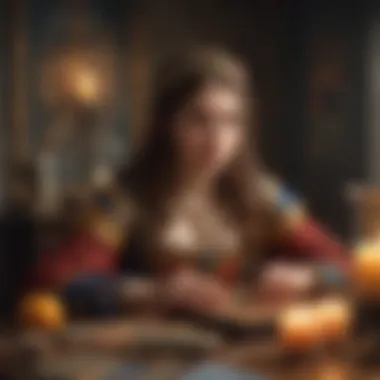
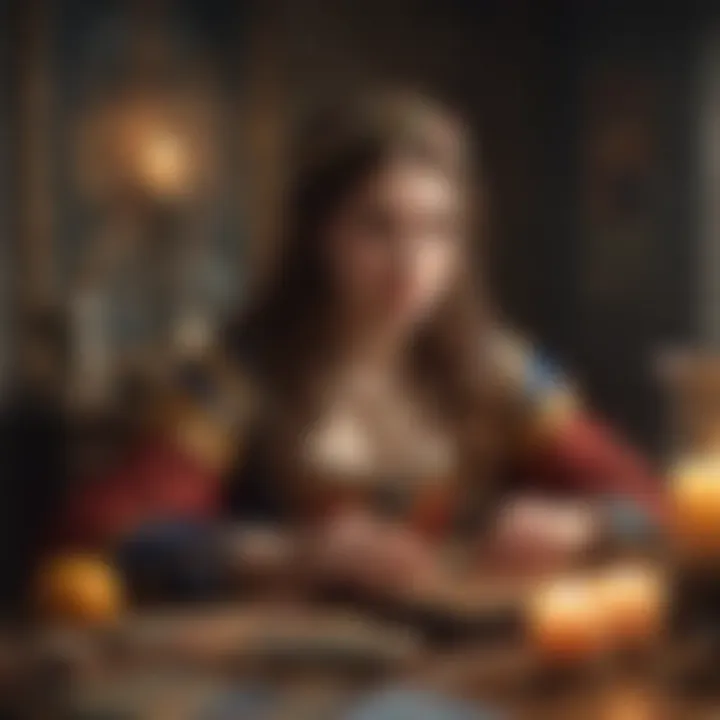
Key figures such as artists and thinkers greatly impacted the creation of tarot imagery. The symbolism in the cards often reflects the philosophies of the time, including humanism and mysticism. The Renaissance Tarot, with its vibrant illustrations, features archetypes that resonate with human experiences, making it not just a tool for divination but also a source of introspection.
The Connection Between Tarot and Astrology
The relationship between tarot and astrology is sophisticated and profound. Many tarot practitioners recognize that the two disciplines complement each other. The Renaissance Tarot Deck incorporates astrological symbols and associations into its design, creating layers of meaning for interpretation.
Each major arcana card can often be linked to a specific planet or zodiac sign, enriching the insights gleaned from a reading. For example, The Emperor relates to Aries, representing authority and structure, while The High Priestess connects with the moon, emphasizing intuition and hidden knowledge.
"The interplay between tarot and astrology offers a deeper understanding of the self and cosmic influences, enhancing the value for the practitioner."
Understanding these connections allows for a more comprehensive approach to readings, offering clarity and guidance. Such depth is essential for astrologers, esotericists, and tarologists seeking to expand their practice.
Structure of the Renaissance Tarot Deck
Understanding the structure of the Renaissance Tarot Deck is crucial for those who wish to fully appreciate its complexities and depth. This structure is not only a layout of cards; it represents ancient wisdom, cultural influences, and philosophical concepts. The careful arrangement of the deck enhances the user’s ability to interpret and connect with the readings on multiple levels. Each aspect of the structure, from the division into Major and Minor Arcana to the detailed symbols and imagery, provides insights that resonate with tarot practitioners.
Major Arcana and Minor Arcana
The Renaissance Tarot Deck is typically divided into two main components: the Major Arcana and the Minor Arcana. Each serves distinct purposes in a reading, playing a unique role in the interpretative process.
Major Arcana
The Major Arcana consists of 22 cards, which depict significant life themes and archetypes. Cards in this category, such as The Fool, The Empress, and The World, encapsulate profound concepts and transformative experiences. They often represent major life events, spiritual lessons, and pivotal moments. Thus, the presence of a Major Arcana card in a reading usually signifies importance and urgency.
Minor Arcana
In contrast, the Minor Arcana includes 56 cards that focus on daily life, challenges, and experiences. This section is subdivided into four suits, commonly identified as Cups, Swords, Wands, and Pentacles. Each suit conveys its own specific themes and influences. For instance, Cups often relate to emotions and relationships, while Swords deal with thoughts and conflicts. This distinction helps practitioners glean insights on both immediate concerns and broader life patterns. The synergy between the Major and Minor Arcana creates a multi-layered framework for interpretation.
Symbols and Imagery
The symbolism in the Renaissance Tarot Deck is intricate and rich. Each card is adorned with imagery that holds multiple meanings, which are influenced by historical and cultural contexts. The art style often reflects the Renaissance period, showcasing vibrant colors and detailed designs.
Importance of Symbols
Symbols serve as key to deeper understanding. They provide context, guiding readings through their historical significance. For example, the image of a lion may evoke notions of strength and courage, while a figure cloaked in mystery might suggest hidden knowledge or intuition. The details within these symbols enhance the narrative of each card.
Imagery as Interpretation Tool
Through engaging with imagery, practitioners can unlock hidden meanings and insights. Art within the cards may connect the reader to their subconscious mind, prompting intuitive responses. The intricate details invite the reader to reflect, ponder, and draw personal connections. Here lies the true power of the Renaissance Tarot Deck – in its ability to bridge the gap between history, personal experience, and spiritual exploration.
The structure and symbols of the Renaissance Tarot Deck offer a comprehensive framework that engages practitioners in deep reflection and personal insight.
By grasping the structure of the Renaissance Tarot Deck, users can navigate their readings with greater confidence and understanding. This foundation allows for more profound interpretations and connects the seeker with the enduring legacy of tarot practices.
Key Cards in the Renaissance Tarot Deck
The cards within the Renaissance Tarot Deck carry profound meanings and symbolize various aspects of human experience. Each card serves as a window into different energies and themes, which can guide the practitioner in their readings. Understanding these key cards is essential for both novice and experienced tarot users as they provide insights into the complexities of life. Through this section, we will delve into five pivotal cards: The Fool, The Magician, The High Priestess, The Empress, and The Emperor. Each plays a unique role in offering guidance, illuminating the path ahead, and enhancing personal reflection.
The Fool: Beginnings and Innocence
The Fool is often seen as the card of new beginnings. Symbolizing innocence and spontaneity, it urges individuals to embrace the uncharted paths of life with an open mind. In many Renaissance decks, The Fool depicts a figure at the edge of a cliff, suggesting a leap into the unknown. This imagery reinforces the idea of taking risks and trusting in one's journey.
When interpreting The Fool, consider the relevance of taking a step back and evaluating your current situation. This card encourages leaving behind doubts and fears to explore new opportunities. It serves as a reminder to have faith in the process of life and be open to where it leads.
The Magician: Skill and Mastery
The Magician represents willpower and the ability to manifest one's desires. Depicted in Renaissance tarot, this card often exhibits a figure surrounded by tools representing the four suits - cups, swords, wands, and pentacles. This symbolism highlights the mastery of one's craft and the importance of resources at hand.
In readings, The Magician points toward the necessity of focus and determination. It indicates that through skill and creativity, a person can bring their ideas into reality. This card reminds us of the power within, urging practitioners to harness their potential and shape their destiny with intention.
The High Priestess: Intuition and Knowledge
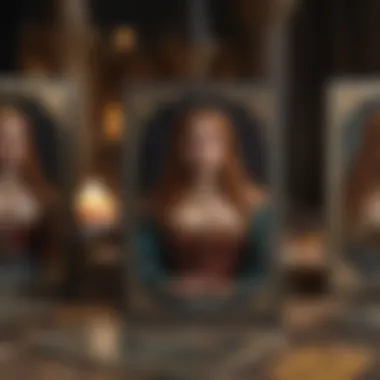
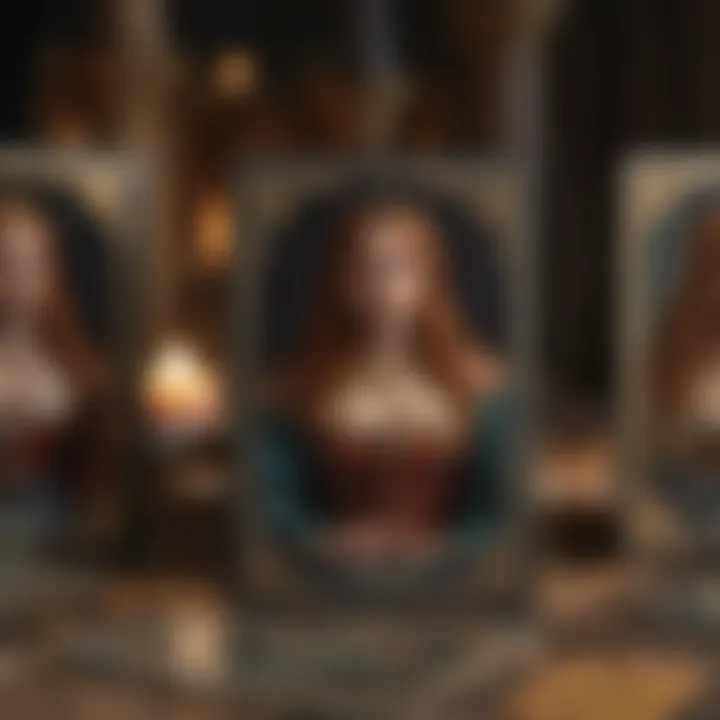
The High Priestess is a representation of intuition and the subconscious. This card often features a woman seated between two pillars, symbolizing the balance between the known and the unknown. It is a call to tap into one's inner wisdom and trust personal insights.
Interpreting The High Priestess often involves recognizing the significance of silence and introspection. It may indicate a time to pause, listen, and reflect. Instead of seeking answers externally, consider what lies deep within. This card highlights the power of knowledge that comes from within and suggests that true wisdom is often found in stillness.
The Empress: Abundance and Nurturing
The Empress embodies feminine energy and nurturing qualities. She represents abundance, fertility, and the beauty of nature. In Renaissance tarot, she is frequently depicted surrounded by lush landscapes and symbols of growth. This portrayal amplifies her connection to the earth and the cycle of life.
When this card appears in a reading, it urges one to embrace creativity and abundance in all forms. Whether it relates to relationships or material resources, The Empress encourages sharing and nurturing. Her influence fosters a sense of community and suggests that through nurturing others, we also nurture ourselves.
The Emperor: Authority and Structure
The Emperor is the epitome of authority and control. He signifies order, structure, and stability. In many decks, the Emperor is illustrated as a strong figure, often wearing armor and seated on a throne. His presence commands respect and signifies the importance of leadership.
In the context of a reading, The Emperor advises establishing boundaries and exercising power responsibly. It may highlight situations that require leadership or the need to take charge of one’s life. This card suggests that structure can provide a solid foundation for growth and success.
Understanding these key cards is crucial for interpreting the Renaissance Tarot Deck effectively. Each card contributes to a broader narrative and highlights unique themes relevant to personal and spiritual growth.
Interpreting the Renaissance Tarot Deck
Interpreting the Renaissance Tarot Deck is a vital aspect of understanding its role within both historical and modern contexts. This phase not only guides users in comprehending the intricate narratives embodied in each card but also helps them navigate personal insights and spiritual development. Whether you are a beginner or an experienced tarot practitioner, mastering interpretation can deepen your connection to the deck and enhance your readings.
Through interpretation, users awaken the symbolic power of the Tarot, transforming straightforward imagery into profound insight. For astrologers and esotericists, the deck can serve as a conduit to explore life's complexities, relationships, and choices.
Methods of Interpretation
The methods of interpreting the Renaissance Tarot can vary significantly among users. However, there are consistent principles that practitioners often follow:
- Intuition: Trusting one’s gut feelings when interpreting cards is crucial. Intuition plays a key role, as it can highlight meanings that diverge from traditional interpretations.
- Symbol Analysis: Each card comes imbued with symbolism and historical context. Analyzing these elements allows practitioners to derive deeper meanings and connections.
- Contextual Reading: Considering the context in which the spread is laid out is essential. The surrounding cards can influence interpretations, altering the story being told.
- Combining Knowledge: Merging knowledge of astrology, numerology, and psychology can enhance interpretation. Credentials in these areas can provide additional layers to readings and broaden understanding.
- Personal Experience: Over time, users will develop their own interpretations. Keeping a tarot journal can help track developments, making the interpretations more personal and individual.
By employing these methods, those who engage with the Renaissance Tarot can unlock meaningful insights from their readings.
Common Spreads and Their Uses
Understanding common tarot spreads is integral to practical interpretation. Here are several well-known spreads that practitioners might utilize:
- Three-Card Spread: This straightforward layout can represent the past, present, and future or explore a specific question’s different facets. It allows for clarity and is perfect for quick readings.
- Celtic Cross Spread: This complex spread offers an extensive view of the querent's situation. It examines influences from multiple angles and is suitable for more elaborate inquiries.
- Single Card Draw: Ideal for quick insights and daily guidance. Drawing a single card provides focused energy and can address a particular theme for the day.
- Relationship Spread: Specifically designed to address dynamics between two individuals, this spread can reveal insights about compatibility, challenges, and potential outcomes.
Each of these spreads offers unique benefits, and selecting the appropriate layout can enhance the clarity and depth of interpretations. Practitioners are encouraged to experiment with various spreads to identify what resonates best with their style and intentions.
Applications of the Renaissance Tarot Deck in Modern Contexts
The Renaissance Tarot Deck holds a significant place in contemporary practices associated with tarot reading and astrology. Its applications today extend beyond mere divination, reaching into personal introspection and decision-making processes. The depth of its symbolism and the historical context enhance its relevance, allowing users to explore both the external world and their internal landscapes. This section dives into two critical areas: self-reflection and personal growth, as well as guidance in decision making.
Self-Reflection and Personal Growth
Self-reflection plays a pivotal role in the application of the Renaissance Tarot Deck. Users engage with the cards not only as tools for predictions but also as mirrors reflecting their innermost thoughts and feelings. The rich imagery enables a profound exploration of one’s subconscious. In each card lies a story, inviting the reader to contemplate various aspects of their life.
When a person draws a card, the symbols and archetypes stimulate introspection. For example, drawing The High Priestess can invoke questions about intuition and inner wisdom. This card, representing knowledge that lies hidden, encourages the reader to delve deeper into their psyche, bringing forth intuitive insights that may lead to personal revelations.
Moreover, the Renaissance Tarot can assist in tracking personal growth over time. By keeping a record of readings, individuals can observe patterns in their thoughts and behaviors. They can assess their evolving perspectives and learn from their own experiences. The tarot thus serves as a facilitator for self-awareness, allowing users to identify areas in need of growth or change.
Guidance in Decision Making
The practical use of the Renaissance Tarot Deck in decision making illustrates its versatility. Many people face choices that bring uncertainty or confusion. Tarot readings can clarify thoughts, helping users evaluate options more effectively. This method allows for a deeper understanding of the situation at hand.
Using specific spreads, such as the three-card spread (past, present, future), individuals can gain insights about their decisions. Each card drawn contributes unique perspectives about the impacts of choices over time. For instance, drawing The Emperor emphasizes structure and authority, highlighting the importance of strategic planning in making sound decisions.
In the realm of decision making, tarot operates on multiple levels. While practical insights are valuable, emotional and spiritual dimensions also play a crucial role. This duality enriches the decision-making process, allowing individuals to weigh both rational thoughts and deep emotions. Balancing the two can lead to more comprehensive and fulfilling choices.
“Tarot can facilitate deep personal insight while also serving as a reliable guide in moments of uncertainty.”
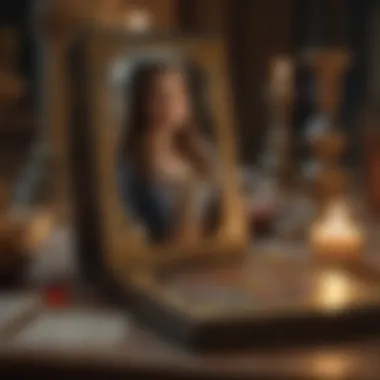
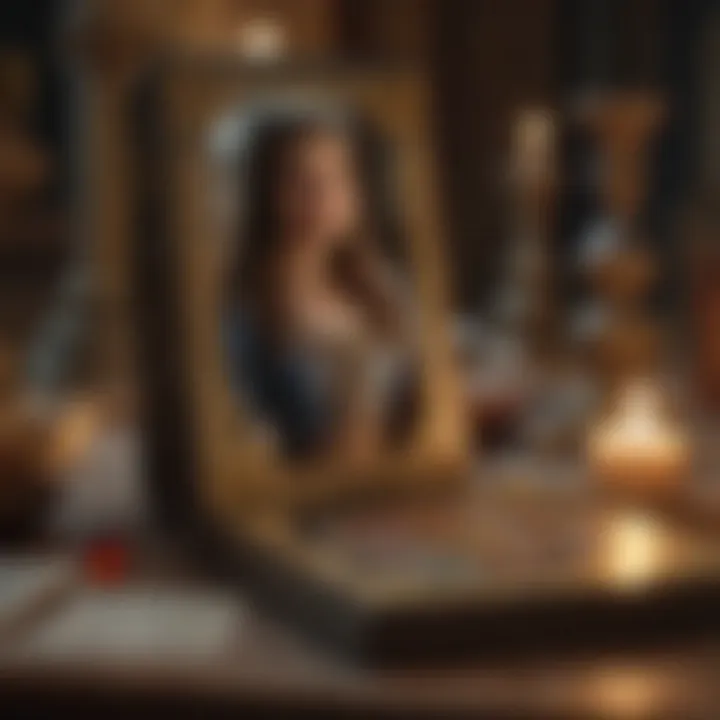
The applications of the Renaissance Tarot Deck in modern contexts, particularly regarding self-reflection and decision making, enrich the user’s life experience. By engaging with the cards thoughtfully, practitioners cultivate a deeper understanding of themselves and their circumstances.
Renaissance Tarot Deck in Popular Culture
The Renaissance Tarot Deck has carved a distinct space in modern culture, serving as a bridge between historical mysticism and contemporary spiritual practices. Its influence extends beyond traditional tarot readings, manifesting in various forms of artistic expression. In literature and visual art, the Renaissance Tarot provides a rich tapestry of themes, symbols, and stories. This aspect makes it not just a tool for divination but also a source of inspiration for creative minds.
Influence in Literature and Art
In literature, the Renaissance Tarot has inspired numerous authors who explore themes of fate, self-discovery, and the human experience. Many writers incorporate tarot imagery to deepen character development and plotlines. Books that focus on psychological and spiritual themes often reference or utilize tarot, intertwining it with their narratives. For example, the use of Tarot cards in the works of authors like Alejandro Jodorowsky elevates storytelling through symbolic imagery.
Artists have similarly drawn from the rich symbolism inherent in the Renaissance Tarot. Paintings, sculptures, and installations often depict tarot cards or their motifs, translating the esoteric into visual language. The imagery evokes questions about existence, revealing insights about humanity. Artists like Salvador Dalí have incorporated tarot symbols into their works, demonstrating how these age-old images maintain relevancy in contemporary artistic endeavors.
- Key Themes:
- Fate and Free Will
- Self-Reflection
- Archetypal Journeys
Ultimately, the Renaissance Tarot influences how writers and artists grapple with the universal themes of life.
Tarot in Film and Media
The integration of the Renaissance Tarot in film is not merely a trend but a reflection of its deeper associations with fate and chance. Many films borrow from tarot's rich symbolism to craft narratives that challenge perceptions around destiny. Films such as The Turin Horse by Béla Tarr subtly echo tarot themes, probing the existential dilemmas humans face.
Television series and documentaries also explore tarot's impact on culture. Shows like The OA use tarot as a narrative device, weaving it into a story that touches on metaphysical concepts and alternate realities.
Common motifs within film that derive from tarot include:
- Tarot card readings as pivotal plot devices
- Characters symbolizing major arcana cards
- Themes of duality and fate
The representation of the Renaissance Tarot in popular media underscores its continuing relevance as a tool for storytelling, allowing audiences to engage with profound philosophical questions about choices, fate, and self-realization.
Differences Between Renaissance and Contemporary Tarot Decks
Understanding the differences between Renaissance and contemporary tarot decks is essential for both practitioners and enthusiasts. The evolution of tarot has significant implications for how individuals use these tools for insight and interpretation. Different artistic styles and cultural contexts have shaped the symbolic language of the tarot across centuries, influencing how modern readers engage with the cards.
Artistic Styles and Symbolism
Renaissance tarot decks are characterized by elaborate artistry and rich symbolism reflecting the cultural and philosophical currents of their time. Artists drew inspiration from themes of alchemy, astrology, and mythology, embedding rich narratives within each card. The use of color, form, and composition in Renaissance decks often showcases a balance between aesthetic beauty and intellectual depth.
Conversely, contemporary tarot decks often reflect personal interpretation and modern sensibilities. Artists today may adopt minimalistic designs or abstract imagery, focusing less on classical symbolism and more on emotional resonance. This shift allows for broader interpretations, inviting readers to connect with the cards based on individual experiences and values.
The differences in artistic style result in varied symbolic interpretations. For example, the card known as The Lovers may depict a romantic scene in a Renaissance deck while being reimagined as a journey of self-discovery in a modern deck. These changes resonate with today's understanding of relationships and personal growth, emphasizing the versatility of tarot as a tool of exploration.
Cultural Contexts and Evolution
The Renaissance period was marked by a resurgence of interest in ancient knowledge, which influenced tarot's development during that time. Cultural context shaped the meanings of tarot cards. The Renaissance tarot decks often aimed to portray a cosmos filled with divine order and human ambition, echoing the societal eagerness for enlightenment.
In contrast, contemporary tarot decks arise from diverse cultural influences. With globalization, decks now incorporate elements from various traditions, including Eastern philosophies and psychological theories. This evolution reflects broader societal shifts, resulting in a more inclusive and diverse interpretation of tarot.
Cultural contexts also inform how tarot is used today. For instance, the modern reader may focus on psychological insights or self-healing, which contrasts with the more fate-oriented focus of earlier decks. Understanding these cultural shifts is crucial for readers as they form connections with their decks, guiding contemporary practices grounded in historical perspectives.
The transformation of tarot reflects its adaptability to the changing human experience, making it a timeless tool for introspection.
In summary, recognizing the distinctions between Renaissance and contemporary tarot decks enhances one's understanding of tarot's rich heritage. Each deck reflects the zeitgeist of its era while inviting personal interpretation. By exploring these differences, practitioners can better appreciate the nuances of their readings and the evolving role of tarot in personal and cultural contexts.
Epilogue: The Enduring Legacy of the Renaissance Tarot Deck
The Renaissance Tarot Deck holds a unique place in both art and the realm of divination. Its enduring legacy goes beyond mere aesthetics or historical significance; it is a profound tool for introspection and spiritual engagement. This section examines the factors that contribute to the enduring nature of the Renaissance Tarot Deck and discusses its implications for users today.
The integration of historical context, artistic expression, and symbolic significance elevates the Renaissance Tarot Deck from a traditional oracle to a rich tapestry of insight. Its cards reflect a blend of Renaissance ideals, such as humanism and the exploration of the self, appealing to those navigating personal challenges or seeking deeper truths.
Additionally, the clear connection to astrological elements finds resonance in today's society. Tarot practitioners increasingly incorporate these aspects into their readings, enhancing the deck's relevance in understanding individual experiences through cosmic lenses.
Continuing Relevance in Today's Society
The Renaissance Tarot Deck continues to resonate today, providing a framework for understanding inner landscapes. Its ability to guide self-reflection and facilitate personal growth makes it a valuable resource for modern tarot enthusiasts.
- Spiritual Exploration: The deck invites users to delve into their consciousness, encouraging a dialogue between the self and the universe. It provides prompts that stimulate reflection on emotions, decisions, and life paths.
- Therapeutic Applications: Many practitioners utilize tarot as a therapeutic tool. The imagery and symbolism can help clients articulate feelings and clarify thoughts, offering a non-linear approach to problem-solving.
- Cultural Resonance: The Renaissance period embodies a shift towards individualism. This reflects in how individuals today gravitate towards personal interpretations of tarot, allowing for diversity in readings.







